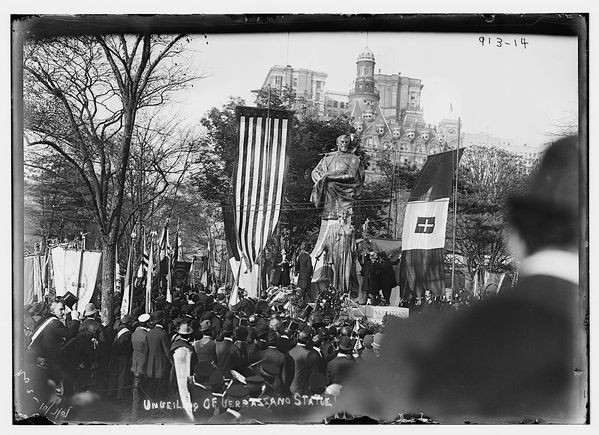The Florentine, (Italian) Verrazzano was comissioned by King Francois of France to find the Northwest Passage to China. He set sail with four ships, and two were lost shortly after leaving France. On March 1, 1524, Verrazzano sigted land near what is now Cape Fear, North Carolina. He sailed south for a time, and then reversed course, and landed near what is now Cape Hattaras on the Outer Banks of North Carolina. Verrazzano saw this narrow strip of land with the Pamlico Sound beyond it, and believed the sound was the Pacific Ocean. He was unable to find a passage through what he percieved to be an isthmus, and continued north along the coastline, missing the entrance to both the Chesapeake and Delaware Bays.
On April 17, he saided into New York Harbour, which he described as follows:
We found a very pleasant place, situated amongst certain little settp hills; from
amidst which hills there ran down into the sea a great stream of water [the Hudson River],
which within the mouth was very deep, and from the sea to the mouth of same, with
the tide, which we found to rise 8 foot, any great vessel laden may pass up.
He anchored in the Narrows, and did some limited exploration.
Upon leaving New York Harbor, he sailed further up the coast exploring areas around Rhode Island, Maine, and eventually heading to Nova Scotia and Newfoundland. He returned to Dieppe on July 8, 1524.
Verrazano's discovery was largely forgotten until a campaign by the director of the Italian Historical Society of America, John N. LaCorte, undertook a campaign to get the proposed Brooklyn-Staten Island Bridge named for Verrazzano. Robert Moses, NY State Parks Comissioner, and head of the Triborough Bridge and Tunnel Athourity, commented that he had never heard of Verrazano, and as such objected to naming the bridge after him. This was not surprising, as to that point, Henry Hudson's 1609 voyage was viewed as the de facto start of European exploration of NY.




 RSS Feed
RSS Feed